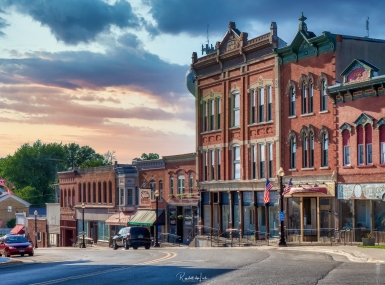HUD opens applications for Choice Neighborhood Planning Grants
Author

Julia Cortina
Upcoming Events
Related News

Key Takeaways
On April 4, the U.S. Department of Housing and Urban Development (HUD) announced the availability of up to $10 million in Choice Neighborhood Planning Grants. Counties are eligible to directly apply, and can utilize awarded funds to create plans to revitalize distressed public and HUD-assisted housing units in their communities.
Choice Neighborhood Planning Grants are a part of HUD’s wider Choice Neighborhoods program. The Choice Neighborhoods program is focused on three core goals: replacing severely distressed housing with high quality mixed-income housing, improving outcomes related to income and employment health, and education, and creating the conditions necessary for public and private investments in amenities and assets that are important to a community.
Using funding from the Choice Neighborhood Planning Grants, counties must develop a comprehensive neighborhood revitalization strategy, or “Transformation Plan.” This plan will serve as a guiding document for counties to revitalize distressed housing units and address the challenges in the surrounding neighborhood.
There are several criteria counties must meet to be eligible for the program. First, each application must focus on the revitalization of at least one severely distressed HUD public and/or assisted housing project. If the project’s occupancy is designated housing for "elderly" or "disabled" residents, it cannot be the only target housing project identified in this grant application. Second, an eligible neighborhood must have at least 15 percent of the residents estimated to be in poverty or have extremely low incomes based on the most recent data collected by the U.S. Census Bureau. Last, if a county decides to partner with a Public Housing Agency or nonprofit in the application process, they must follow additional eligibility criteria, which can be found here.
Successful applicants will need to work with public and private agencies, organizations (including philanthropic and civic organizations), banks and financial institutions, and individuals to gather support and community involvement in the county’s Transformation Plan.
HUD is expected to release funding for Choice Neighborhood Implementation Grants program soon, which will provide funding to applicants to implement their Transformation Plans. Additionally, HUD also plans to release a mapping tool that will display Choice Neighborhood eligibility with certain rating factors in the near future.
The maximum grant award for Choice Neighborhood Planning Grants is $500,000. Applications are due on grants.gov on June 6, 2023 at 11:59 p.m. EDT.
Additional Resources
Attachments
Related News

Counties and Railroads: Shared Priorities for the Next Surface Transportation Bill
County leaders from across the country have a vital opportunity to ensure their infrastructure priorities are front and center.

House reintroduces bipartisan legislation to level playing field for rural communities
House reintroduced the Rural Partnership and Prosperity Act, bipartisan legislation intended to advance economic development in rural counties and overcome barriers to obtaining federal funding and resources.

Podcast: Eastern Tennessee counties invest in tourism during shutdown
Sevier County, Tenn. refused to let the government shutdown devastate its fall tourism draw—Great Smoky Mountains National Park. County Mayor Larry Waters describes the lengths he and his neighbors went to keep the park open. And NACo Chief Government Affairs Officer Mark Ritacco offers an outlook on what counties can take away from the shutdown and into the future.